Sri Lanka travel guide: Everything to know before you go
Sri Lanka lures travellers with an impressive array: wildlife, history, exceptional food, surfing hotspots and beaches

Sri Lanka can be best described as south Asia in miniature form, filled with beaches, elephants, tea plantations, curries, sacred rituals, colourful ceremonies, and most of all, warmly welcoming people. Hailed as the “Pearl of the Indian Ocean” and the “Teardrop of India”, this ancient island nation has long been celebrated – and coveted – for its abundant landscapes, strategic significance, and rare beauty.
Sri Lanka’s past is remarkably well preserved, despite years of unrest and strife. From Victorian-era colonial clubs to centuries-old Buddhist temples, layer after layer of Sri Lankan history is within reach. Its natural heritage is rich, too. Ten national parks provide sanctuary for sloth bears to sambars, leopards to lorises, and of course plenty of elephants. For such a small island (roughly the size of Ireland), the diversity here is striking – you can climb mist-robed mountains, surf silvery shores, trek through abundant jungle, all in the same day.
Sri Lanka’s cities have that frenetic, cheerful chaos common to Asian cities, whether it’s Colombo’s colonial grandeur or Kandy’s exalted lakeside lifestyle. Either way, the coast’s serenity is never far, with some of the finest beaches in the world ready to embrace you: champagne-coloured sand, palms in regal repose, and the tropical waters of the Indian Ocean.
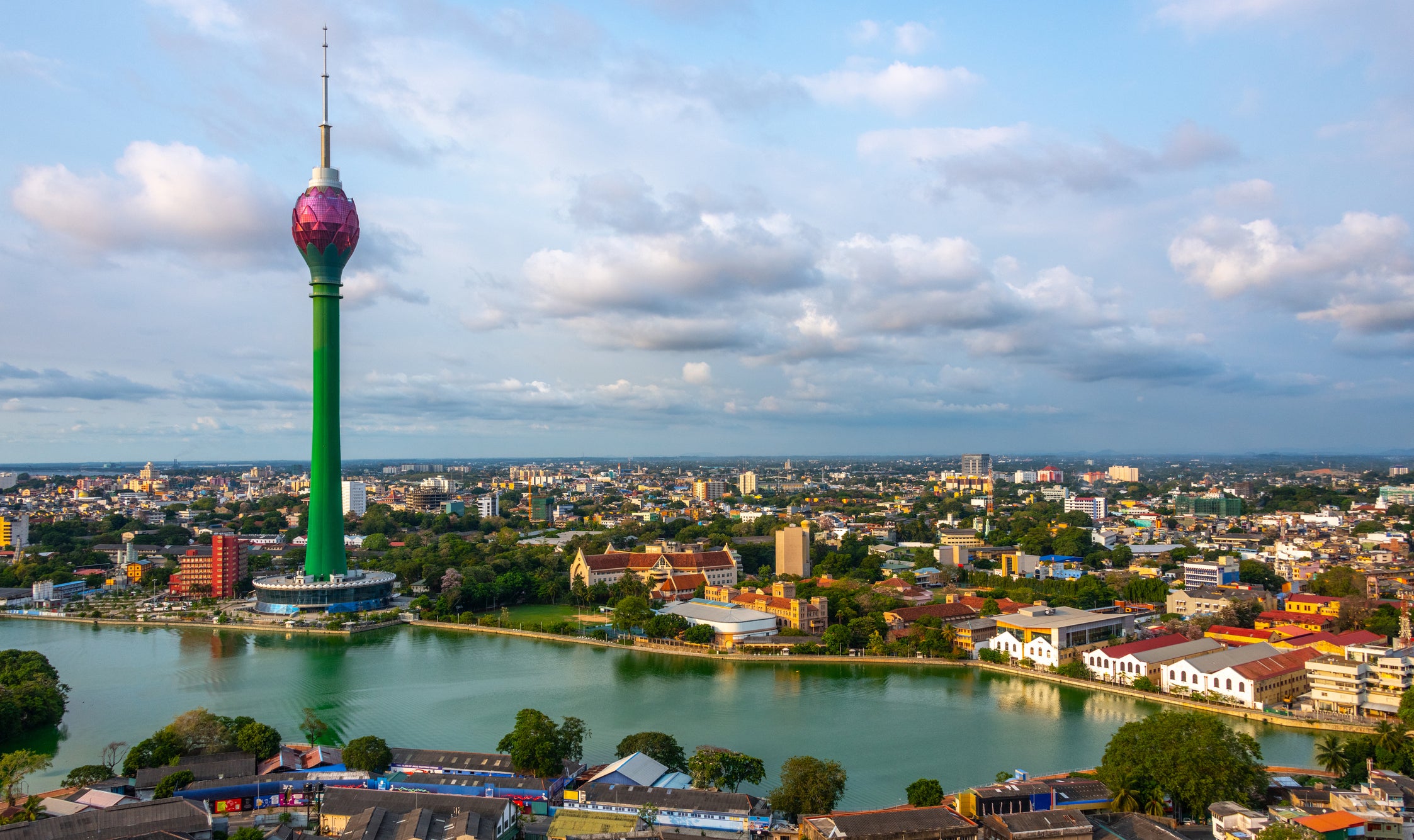
Best time to go
It depends on what you’re looking for. Thanks to its dual monsoon pattern, December-April tends to be best for beaches and wildlife excursions on the south and west of the island, while the dry months of May-September unlock access to the north and east.
Each side has its pick of stunning locations, and if you want to see both (without getting drenched) then September-October and April are the shoulder seasons for you, offering cooler temperatures, fewer tourists and excellent hiking opportunities. April coincides with the local new year celebrations, so be wary of increased congestion on the transport networks.
Read more: This previously out-of-favour tourist island is now seeing a boom in bookings
Top cities and regions
Kandy
Kandy is Sri Lanka’s beating heart: Holy town, hilltop enclave, and spiritual centre. Sri Lanka’s ancient customs and natural beauty come together here, with temples, shrines and palaces reflected in the glassy surface of the lake, hugged by hills as green as any you’ll ever see. Take the Main Line train from Colombo, wind your way up the mountains, and enjoy one of the world’s most celebrated railway rides. Kandy is where Sri Lanka’s kings resided, and it’s easy to see why; today, the entirety of Kandy is a Unesco World Heritage site.
Despite the crowds, be sure to visit the Temple of the Sacred Tooth, Sri Lanka’s greatest religious relic, and said to be from the Buddha’s own mouth. While you can’t see the tooth itself – only the case is on display – the temple itself is beautiful, with many chambers, galleries and artefacts. Go in the evening to witness the prayers and the candlelight. Further along the train line is Ella, where the British plantation owners once resided, and home to Ella Rock, whose summit is a challenging but reasonable hike (three–four hours).
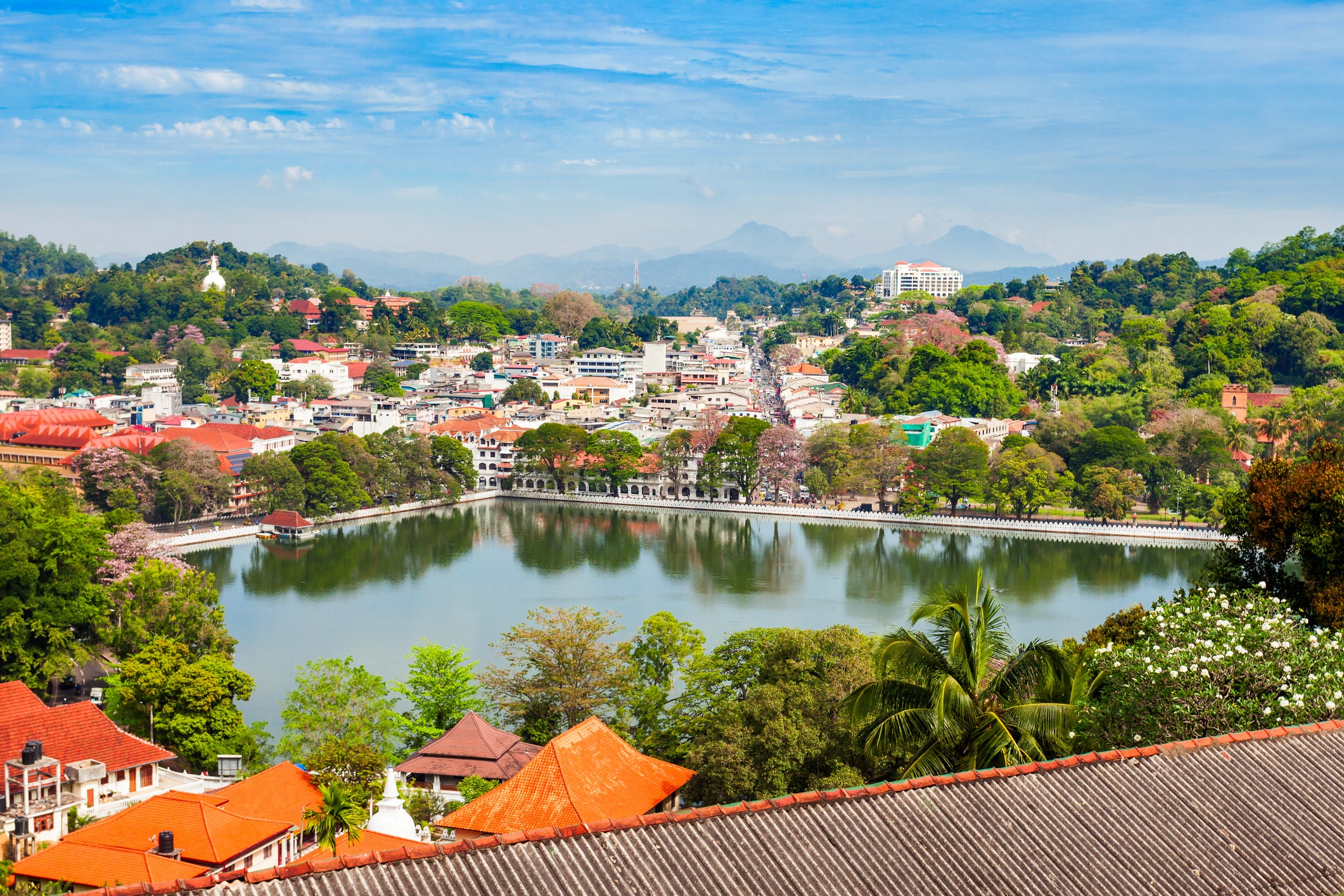
Galle
Whitewashed, manicured, and orderly, Galle feels like a prestigious Mediterranean seaside resort. No wonder: it was founded by the Portuguese and expanded by the Dutch. Galle’s architecture and atmosphere have a distinctly European feel, from the prim and proper lighthouse to the austere Protestant churches. Gone are the laid-back surfer vibes of Weligama and Marisa, replaced by well-to-do couples, fashionable boutiques, and candlelit dinners.
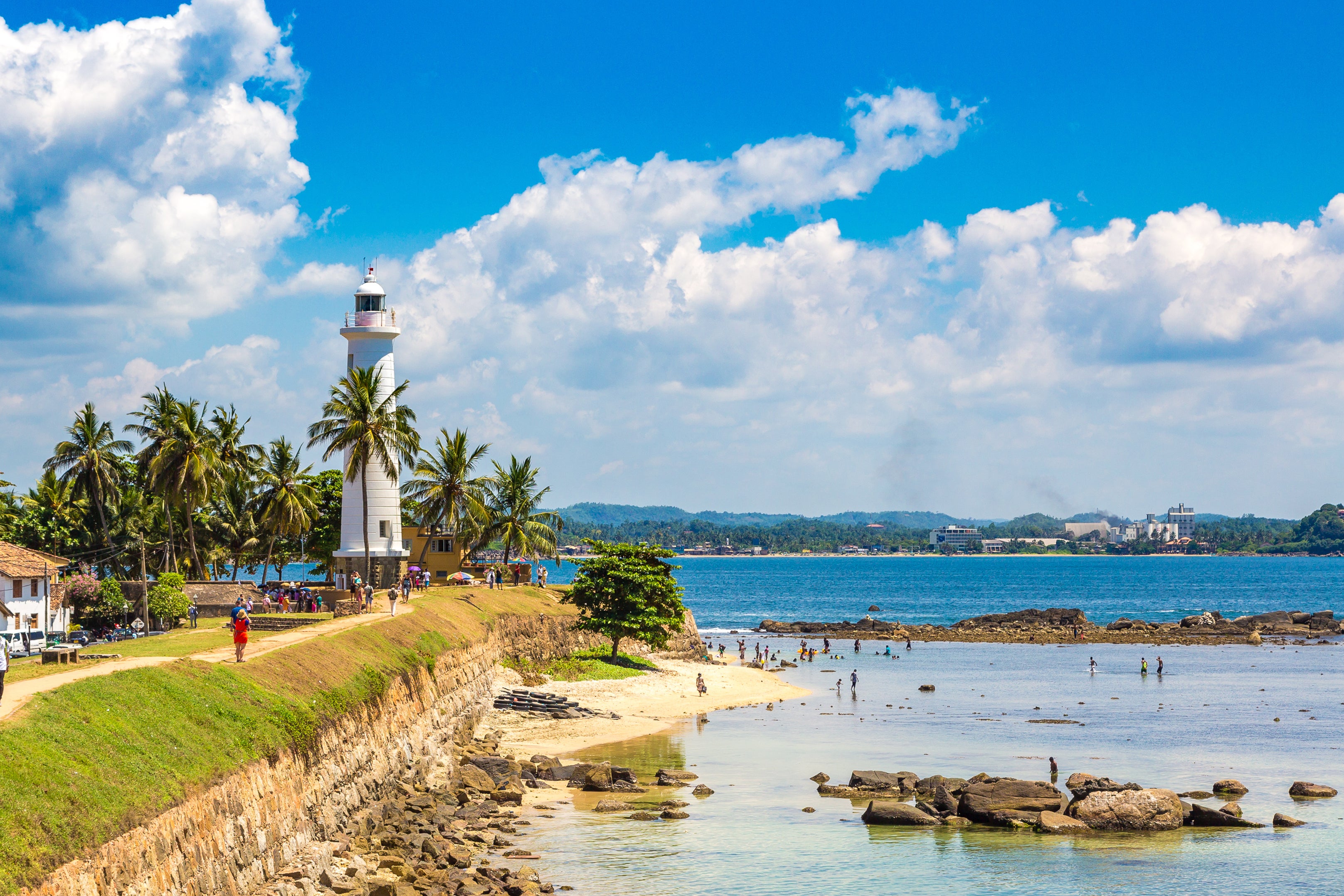
Explore the well-preserved fort by daylight before taking a stroll down the tranquil lanes and avenues of the town itself. The seafood food is spectacular, the bars plentiful, and the nights balmy and untroubled. Just don’t expect much nightlife.
Colombo
Crowded, frenetic, and choked up, Colombo used to be dismissed as merely the place from which to fly in and out. But Colombo has history, culture and excellent food.
If you’re keen on colonial history, the city boasts some of the best-preserved architecture from anywhere in the former British Empire. If not, there are plenty of temples, museums, and shrines besides. Hop on a tuk-tuk and explore an anthology of Sri Lanka’s past: the mind-melting stripes of Jami Ul-Alfar mosque; the statues of the Gangaramaya (Vihara) Buddhist temple; and St Anthony’s Shrine, a Catholic church illuminated at night. Gathering these cultural riches is the Colombo National Museum, the biggest in Sri Lanka and featuring over 100,000 artefacts.
Read more: How Singapore forged a world-class food scene over 60 years – from hawker markets to Michelin stars
Anuradhapura and Sigiriya
The ancient city of Anuradhapura was abandoned in the 13th century, and was overgrown by jungle until the 19th century. Since then, it has flourished as a site for both Buddhist pilgrims and tourists, who flock to see the shrines and relics. One of the most visited is a sacred pipal tree, planted in 245BC from a cutting of the Bo tree, under which it’s said the Buddha attained enlightenment. It’s recognised as the oldest cultivated tree in the world.
Even more iconic are the Dagobas, the wide-domed Buddhist temples that dominate the city. Ruwanwelisaya, the oldest and the grandest, can get crowded. Instead, go wherever the ceremonies are taking place. Outside of the city lies Mihintale, a hilltop where the first Buddhist monastery is said to have converted a Sri Lankan king and his hunting party. The view from the peak of the hills is spectacular, but go at sunrise rather than sunset, or prepare to huddle among couples.
Just over an hour away is Sigiriya, a rock formation featuring an ancient fortress. It’s another Unesco site, and possibly the single most popular attraction in the country. Although entry is a little pricey (£25 for foreign visitors), it’s worth it. You’ll see ancient frescoes, the centuries-old Mirror Wall, and the enormous – scarcely-believable – lion’s paws guarding the summit (the remains of what was originally a towering stone lion). It’s 350-odd metres to the summit, so wear your exercise gear and prepare to sweat.
Arugam Bay and Kumana National Park
Sri Lanka isn’t short of beaches. The crescent-moon sands of Arugam Bay are among the best. While Weligama, Mirissa, and Hikkaduwa have more of a party vibe, Arugam Bay’s tranquil beauty is better suited to relaxing. Pitched on the unspoilt east coast, the waves are best between May and October – when the rest of Sri Lanka is beset by monsoon rains and ocean currents. Arugam Bay’s thatched huts and sleepy shoreline is one of the finest places to get away from it all. The waves at Main Point are some of the best in Sri Lanka.
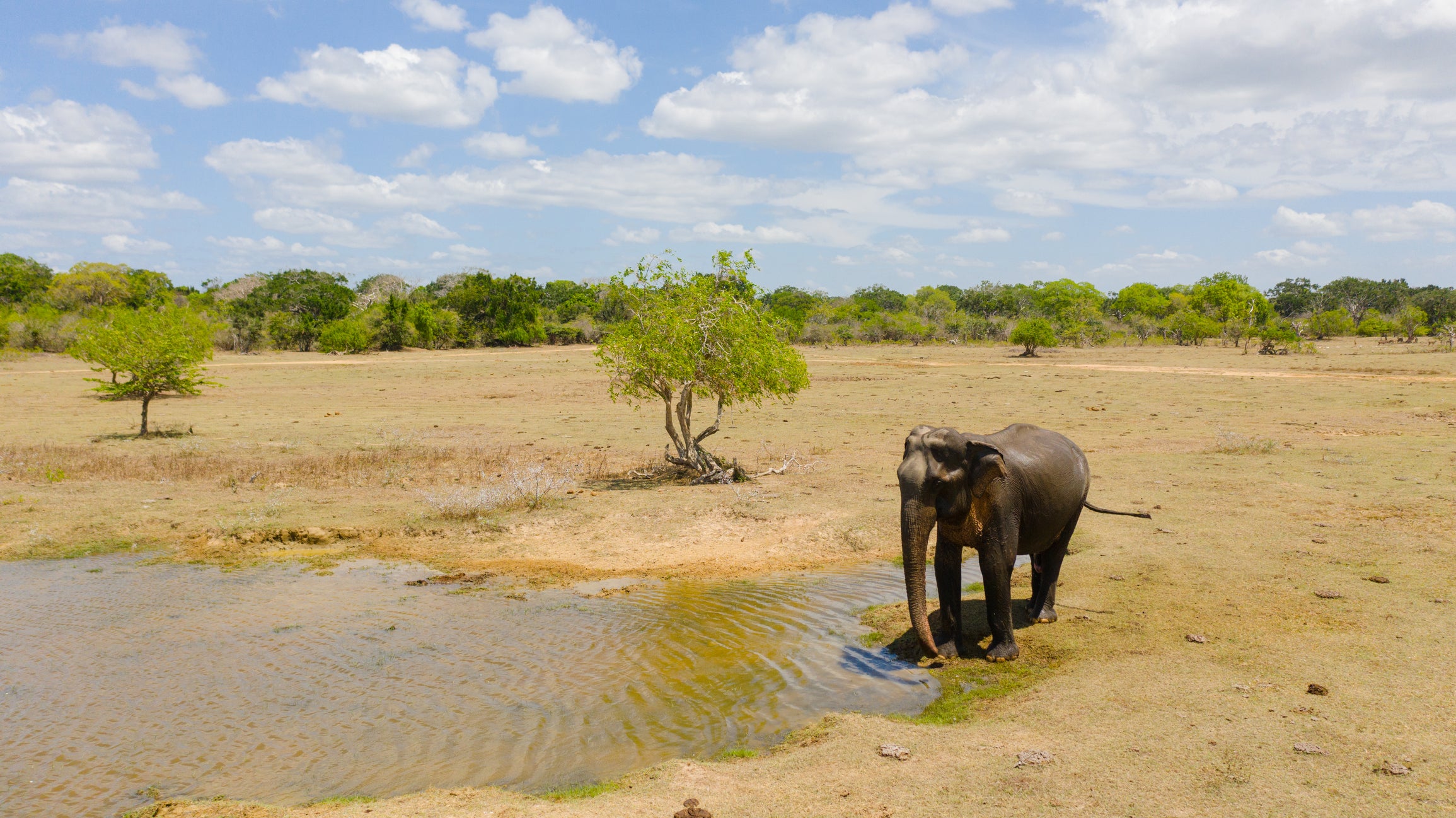
When you’re ready to explore again, hail a tuk-tuk and head to Kumana National Park. Unlike Yala, its famous neighbour, Kumana National Park retains much more of its wilderness – less zoo, more sanctuary. It’s especially good for bird spotting, with hundreds of species nesting there. A guide is included with entry, which means you can’t tour the park alone, but they’re such good spotters that it makes for a much better experience.
Best under-the-radar destinations
Jaffna
Until recently, the north of Sri Lanka was scarcely visited due to the 25-year civil war, with the Tamil-controlled northern regions engulfed in conflict. With the war long since over, travellers are returning to Jaffna, the biggest city in the north and previously completely inaccessible.
India is the cultural force here, not the Singhalese of Sri Lanka, and you immediately sense the difference. Language, food, atmosphere are all south Indian; Tamil rather than Sinhalese, masala dhosa rather than kottu roti, Shiva rather than Buddha. The biggest Hindu temple in Sri Lanka, Nallur Kandaswamy, is as vibrant and impressive as any in India, and if you’re hazy about the differences between Hinduism and Buddhism, exploring Nallur Kandaswamy after being in the south will sharpen you up.
Jaffna’s fort is smaller than Galle’s but is much less crowded, and especially beautiful at sunset. And fewer tourists means the locals are less accustomed to dealing with foreigners, though no less welcoming.
Wilpattu National Park
It’s Sri Lanka’s biggest national park, dominating the north-west coast, but Wilpattu has an undiscovered, secretive feel. While more popular national parks have “Disneyfied” the wildlife experience, with viewing stations, zoo-like enclosures, and money-making animal encounters, Wilpattu is wilderness proper.
If you want to pat an elephant and get a hundred likes for it, stick to Yala; if you want to lose yourself in dense woodland – quietly sighting a spotted deer, sloth bear or leopard – then Wilpattu is unsurpassed. Check into one of the forest lodges in the park, stick your jodhpurs on and experience a traditional safari game drive around the park.
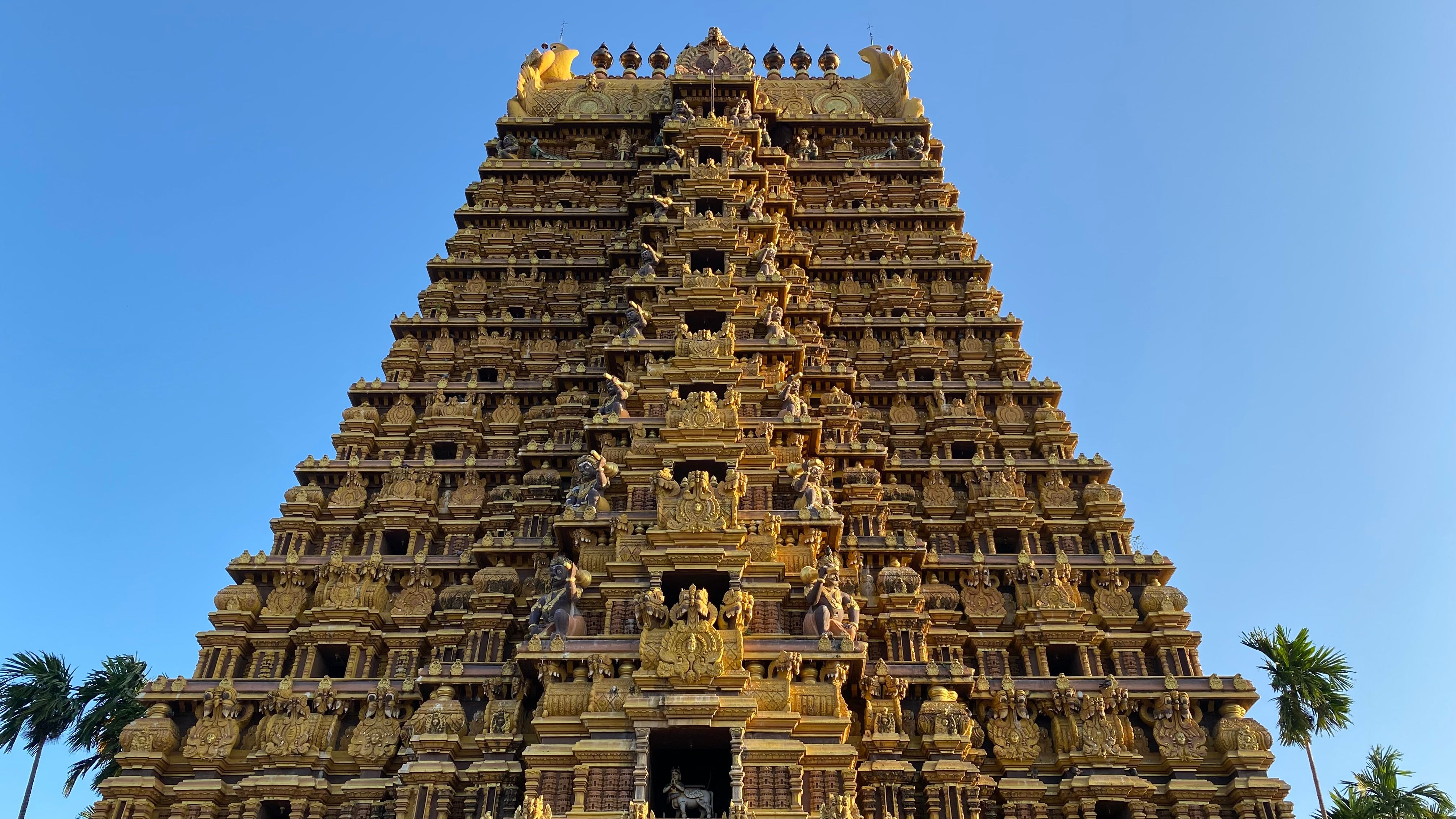
Trincomalee
Given the sheer beauty of its glittering bay, it’s a wonder that Trincomalee isn’t better-known. Head over to the north-east coast and dip into a miniature world all of its own: tropical beaches bunched together like ripe fruit, shrines where the centuries peel away to reveal age-old rituals, and lagoon water as clear as crushed crystal. Half a dozen of Trincomalee’s beaches could make a strong claim for best on the island. Crack open a coconut, kick off your sandals, and luxuriate in the sunshine. When you’re ready to amble, there’s a colonial-era fort, historic temples, and rocky outcrops where you can spot blue whales.
Read more: The little-visited region that could be the answer to Japan’s overtourism problem
Best things to do
Take the train deep into the tea plantations
Whatever else you get up to in Sri Lanka, make absolutely sure that you take the Main Line train from Colombo to Kandy, and then from Kandy all the way to Ella. It takes eight hours or more, but this is one of those journeys that’s worth savouring. The train climbs inland from the coast, cutting through rock, farmland and jungle. You’ll travel across mountains veiled in mist, hillsides carpeted with tea leaves, and imposing brick-arched bridges from another era. If you fancy a cocktail and a party, stay on until at Ella; if you want a cup of tea and tranquillity, get off at Nuwara Eliyah.
Get a taste of surf culture
Surfing can be tough, physically draining, and utterly, blissfully exhausting. Getting on a board is daunting, especially when surrounded by confident surfers strutting about, so find a school that’s right for you. Although Weligama is the surf hotspot, there are less crowded (and much prettier) places to learn all along the south coast, such as Mirissa, Ahangama, or Unawatuna, which are also great for beginners.
While you can surf just for the day, it takes some getting used to, so if you have the time check into a surf camp for a few days. Plunging into the sea every morning, feeling the pump and force of the waves, and collapsing on the sands in happy fatigue afterwards is a rewarding, nourishing, and vital experience – especially if you combine it with some yoga. Plus, there is no appetite quite like the one worked up on a surfboard, so when you finally sit down for your coconut curry it’ll taste even better.
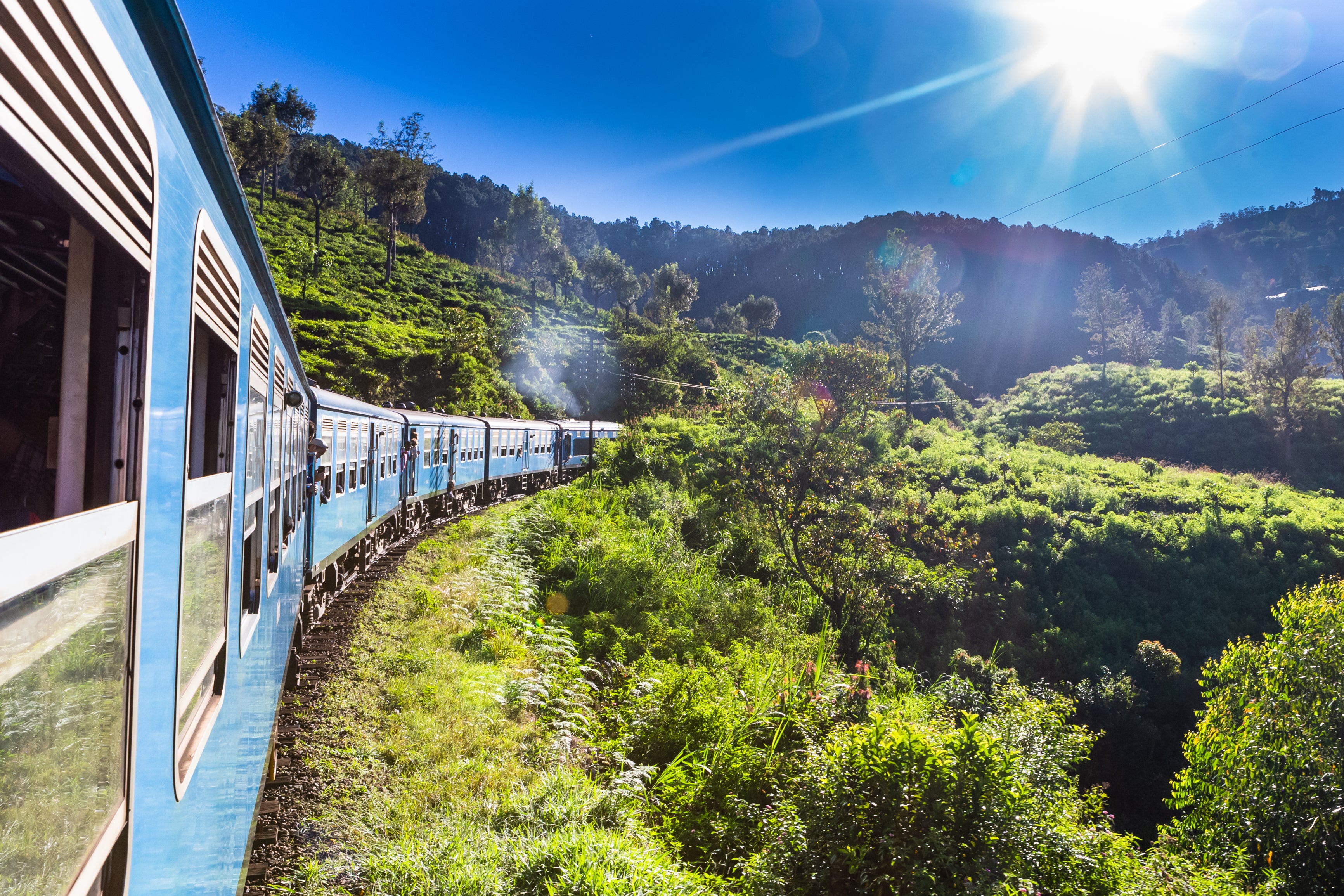
Get up close to wildlife
Many conservation projects in Sri Lanka are preserving wildlife sustainably while also giving you unparalleled access. Since the early 1990s, numbers of elephants, leopards, and other endangered species have risen considerably, and sustainable tourism has helped. The Smithsonian Primate Research Station, near Polonnaruwa, is the oldest of its kind in the world and Bundala’s flamingo-filled wetlands are a Unesco biosphere reserve. The safaris in the national parks – Wilpattu, Udawalawe, and Wasgamuwa – rival almost anything in Africa.
Read more: How to take advantage of the loophole allowing visa-free travel to China
Getting around
Travelling by train isn’t just convenient, it’s also a quintessential journey through Sri Lanka’s history and a window unto its landscapes, and is also very cheap.
For short journeys, it has to be tuk-tuk. Individually decorated, stubbornly persistent and formidably cheap, travelling by tuk-tuk quickly becomes addictive. It’s not always comfortable, especially if you squeeze three or more into the backseat, but it’s a great way to chat to locals and get the wind in your hair. Agree the fee in advance, especially in tourist areas, but remember the country has just come off suffering from a fuel crisis – if you can afford to fork out an extra hundred rupees, do it.
Otherwise, when you need that 6am ride to the airport or that drive down from the mountains to the coast, book a taxi. Many tuk-tuk drivers also have cars, so ask ahead about a taxi service. Roads are generally well maintained and safe, but driving can be erratic.
How to get there
Sri Lankan Airways offer direct flights between London and Colombo. Other airlines offer stopovers, often in Doha or Dubai.
Money-saving tip
Travel and food are cheap in Sri Lanka, but accommodation is comparatively expensive. Alcohol is pricey, too – this is a conservative island, and the drinking culture is much less raucous here than in the rest of south-east Asia. There’s no real hostel culture either, so the best value are the guesthouses, which are often family-run and very friendly. If you want the full-on luxury experience, Sri Lanka offers an enviable abundance of Western opulence – at Western prices, so book in advance.
Tipping isn’t expected, but haggling very much is. Friendly negotiation is part of the transaction here, so get stuck in.
Current travel restrictions and entry requirements
The Department of Immigration and Emigration has a online embarkation form. Foreign nationals can complete the online form three days prior to arrival in Sri Lanka. The service is free of charge. All visitors are advised to apply online for an Electronic Travel Authorisation (ETA) to enter Sri Lanka; you can apply for on the ETA website.
As entry requirements are liable to change, check the UK’s Foreign Office’s travel advice website before any travel for updates.
Read more: Best things to do in Singapore, from hikes, cycle trails to exploring the Geylang neighbourhood
FAQs
What’s the weather like?
Thanks to its ocean winds, Sri Lanka is tropical and enjoyably warm most of the year round, with coastal temperatures averaging around 28C and upland areas averaging between 16-20C. The island experiences a dual monsoon, affecting one side of the island at a time. The south-western region and central highlands receive most of the island’s rainfall, whilst the north and the east experience a distinct dry season from May to September. Take a jacket – the evenings can get chilly.
What time zone is it in?
Sri Lanka Standard Time, GMT+5:30
What currency do I need?
The Sri Lankan rupee. You can get hold of these before travel, or you can exchange or withdraw some after arrival. Exchanging at the airport will be more expensive, but it’s also a reliable 24/7 service and a good place to set yourself up for the next few days. Although card payments are growing increasingly popular, most small shops, local restaurants and markets still aren’t set up for it, so make sure you always have cash on you.
What language is spoken?
The primary language of Sri Lanka is Sinhala, although in the north Tamil is widely spoken. You’ll find English spoken by many, particularly as the language of commerce.
What plug sockets are used?
Types D and G. Plug type D is the plug which has three round pins in a triangular pattern; type G is what is used in the UK.
Read more: Now is the perfect time to discover India’s most underrated city
Join our commenting forum
Join thought-provoking conversations, follow other Independent readers and see their replies
Comments